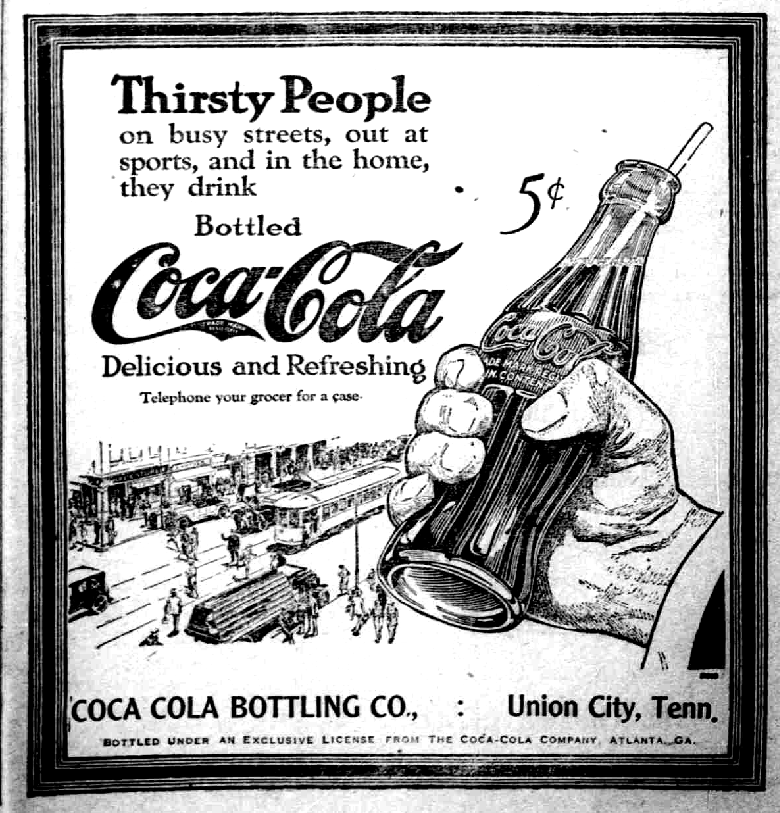9 2.5 Advertising Messages
Advertising is defined as a paid form of communication from an identified sponsor using mass media to persuade or influence an audience. Because there are so many diverse advertisers attempting to reach so many different types of audiences with persuasive messages, many forms of advertising have developed. We will discuss nine types of advertising and the information tasks they require of the communicator.

1) Brand or national consumer advertising – This type of advertising emphasizes brand identity and image. Advertising campaigns for Coca-Cola, Nike, or American Express are examples. Brand advertising seeks to generate demand for a product or service, and then convince the audience that a specific brand is the one they want. For example, Nike ads seek to generate demand for expensive athletic shoes and to convince purchasers that they want Nikes rather than Reeboks. The information tasks for these types of campaigns are extensive but much of the information that is gathered usually does not actually appear in the content of the ads themselves. Rather, the information informs the development of the advertising campaign strategy and the choice of media in which to place the ads.
2) Retail – Advertising that is local and that focuses on the store where products and services can be purchased is called retail advertising. The message emphasizes price, availability, location and hours of operation. Nike, for example, might generate a brand ad about their shoes, but the local department store would generate a retail ad telling about the great sale they are having on Nikes and other shoes. The department store managers don’t care which brand of shoe you buy as long as you shop in their store rather than their competitor’s store. The information tasks for these types of ads include gathering a lot of highly specific information about the retailer, given the purpose of the advertisements.
3) Directory – Ads that help you learn where to buy a product or service are directory ads. The telephone yellow pages are the most common form of directory ads, but many other directories perform the same function. The ads that appear as “sponsored links” next to your results from a search in a search engine are a form of directory ads. They are classified and served to you according to the terms in your search. These types of ads are almost purely information-based and meet an already-expressed need for information on the part of the audience member. The information tasks connected to directory ads include analysis of vast data sets of information about consumers, much of which is done by computer algorithms. But the ad creators need to understand how and why a particular consumer was targeted for a particular ad in order to be effective.

4) Political – Ads designed to persuade people to vote for a politician are familiar fixtures on
the media landscape every political season. We can all recall candidate ads we’ve seen during each election cycle. Information tasks for this type of ad include gathering background research about the opposition candidate as well as material about the candidate sponsoring the ad, the latest polls of likely voters, public attitudes about the issues, and other facts that inform the strategy for the copy and placement of the ad. Communicators also must know the relevant legal and regulatory restrictions for political advertising in each market where they ads may run.
5) Direct-response – These types of ads can appear in any medium. A direct-response ad tries to stimulate a sale directly. The consumer can respond by phone, mail, or electronically, and the product is delivered directly to the consumer by mail or to a mobile device (a coupon for the pizza parlor you just passed on the street). On television, the infomercials for hair-care products, exercise equipment, or kitchen gear are examples of direct-response ads. Flyers you get in the mail to “Buy this Product” are also examples. These ads have a high information component and the communicators’ information tasks reflect the need to be well-informed. The message-makers assume the audience is already interested in or curious about the goods or services, since they are watching the infomercial, reading the catalog, or have gone to the website. The direct-response piece includes lots of information about the products, and the goal is to make the sale. Mobile versions of direct response ads have to have a good “hook” to get the receiver to pay attention and act. EXAMPLES AND EXPLANATION
6) Business-to-business – Messages directed at retailers, wholesalers, distributors, industrial purchasers, and professionals such as lawyers and physicians comprise business-to-business advertising. These ads are concentrated in business and professional publications. For example, banks advertise to small business owners; or equipment manufacturers advertise to factory managers, hospital administrators, restaurant owners, and others who might purchase their equipment. Unless you do the type of work that makes you an audience member for these kinds of messages, you aren’t likely to see very many business-to-business ads. Because these types of ads require that they be directed toward a specialist audience with specific needs for products or services tailored for a particular industry, the information tasks required to produce these ads are highly detailed. EXAMPLES OF AWARD-WINNING B2B ADVERTISING
7) Institutional – This form of advertising is sometimes called corporate advertising. The focus of the message is on establishing a corporate identity or winning the public over to the organization’s point of view. Rather than outlining the product or service offered by the institution, the ad attempts to create an image or reinforce an attitude about the company as a whole. Also, the ad may attempt to influence policymaking by advocating a particular position on some national issue that affects the interests of the sponsoring institution. The information component of this type of ad usually consists of extensive background research about the attitudes and psychologies of the intended audience, and the information tasks include gathering in-depth knowledge about the sponsoring institution and its goals for the message.

8) Advertising features – Also referred to as an advertorial, branded content or native ads, this form is
becoming more common. Many magazines carry inserts that look like a feature piece but are actually generated by an advertiser or a public relations firm, not by a journalist. For example, you might find an insert in a newsweekly magazine about living a healthy lifestyle, with articles and photographs that is sponsored by a pharmaceutical company. The communicator must have solid background information about the product, service or topic AND must know how to write like a journalist. Hence, the information tasks for this type of content include both content and stylistic aspects.
9) Public service – This type of ad communicates a message on behalf of some good cause, such as stopping drunk driving or preventing AIDS. Unlike the other types of advertising, media professionals create these ads for free, and time or space to run the ads are donated by media outlets. The ads typically include some information that emphasizes the nature of the problem or the cause so as to induce the audience to take the problem seriously. Information tasks for public service ads or PSAs usually include identifying an emotional or psychological “hook” for the audience to get engaged with the ad content. UNEP World Environment Day PSA
Much of the information that is used in the creation of advertising never actually appears in the copy of the ad or in the visuals that are produced. Instead, extensive information is uncovered to help the advertising professionals understand the background about the audience and message. For instance, communicators need to understand the product or service they will be pitching, the interests and needs of the intended audience, the competitors’ products advantages and disadvantages, all of which helps them decide how much money should be spent on the campaign and where the ads should appear.

